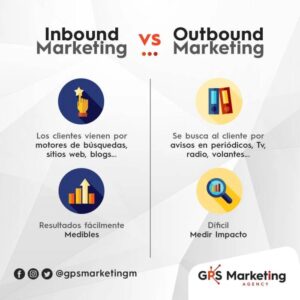
In today’s digital age, the significance of online reputation management cannot be overstated. As consumers increasingly turn to the internet for information, a business’s online presence can make or break its success. Understanding how to effectively manage your brand’s reputation online opens doors to new opportunities and helps maintain customer trust, which is essential for long-term growth.
Online reputation management encompasses a variety of strategies and tools aimed at monitoring and enhancing how a business is perceived in the digital landscape. By implementing effective practices, companies can not only rectify negative impressions but also promote positive feedback, fostering a robust and trustworthy online identity.
Importance of Online Reputation Management
In today’s digital age, online reputation management (ORM) has emerged as a critical aspect for businesses of all sizes. It involves monitoring, influencing, and managing public perception of a brand or individual on the internet. With the increasing reliance on online reviews and social media, the significance of ORM cannot be overstated.A negative online reputation can have profound effects on consumer behavior.
Research shows that a majority of consumers conduct online research before making a purchase, and they tend to trust reviews from other customers more than traditional advertising. A single negative review can deter potential customers and lead to a decline in sales. Moreover, businesses with a tarnished reputation may struggle to attract new clients, retain existing ones, or establish partnerships.
Consumer trust, which is critical for business growth, is easily lost and difficult to regain.
Methods for Monitoring Online Reputation Effectively
Effective monitoring of online reputation is crucial for businesses to maintain a positive image. This involves staying aware of what is being said about a brand across various platforms. Here are essential methods to achieve this:
1. Set Up Google Alerts
This tool notifies businesses whenever their name or relevant s are mentioned online. Regular alerts can help track new reviews, articles, and blog posts.
2. Social Media Monitoring Tools
Utilizing tools like Hootsuite or Mention allows businesses to track mentions on social platforms. These tools provide insights into customer sentiment and engagement.
3. Regular Review Checks
Actively monitoring review sites such as Yelp, TripAdvisor, or Google Reviews provides valuable feedback and highlights areas for improvement. Responding to both positive and negative reviews demonstrates that a business values customer input.
4. Surveys and Feedback Forms
Encouraging customers to fill out surveys can provide direct insights into consumer satisfaction and areas needing attention. This data is invaluable for making informed adjustments to products or services.
5. Competitor Analysis
Understanding how competitors manage their online reputations can offer strategic insights for improving one’s brand image. Observing their strengths and weaknesses can inform ORM strategies.
6. Engage with Customers
Proactively interacting with customers on social media or through email fosters a positive relationship and allows businesses to address concerns before they escalate into negative reviews.
“Monitoring your online reputation is not just about managing negative feedback, but also about amplifying positive experiences.”
By employing these methods, businesses can take control of their online presence, ensuring they communicate effectively with their audience while addressing any potential issues promptly. This proactive approach not only helps in mitigating damage from negative feedback but also enhances brand loyalty and trust among consumers.
Tools and Software for Online Reputation Management

In today’s digital landscape, managing your online reputation is crucial for both personal and business success. There are various tools and software available that can help individuals and organizations monitor, protect, and enhance their online presence. Choosing the right tools can make a significant difference in how effectively you manage your reputation.Several marketing software tools are widely recognized for their capabilities in online reputation management.
These tools can help track mentions, gather reviews, and analyze sentiment around your brand. Below are some of the most popular tools used in this space:
Popular Online Reputation Management Tools
A variety of software solutions are available, each offering unique features that cater to different aspects of reputation management. Understanding the strengths and weaknesses of these tools can help you make informed decisions.
| Tool | Features | Pricing | Best For |
|---|---|---|---|
| Brand24 | Real-time monitoring, sentiment analysis, mentions tracking | Starts at $49/month | Small to medium businesses |
| Reputation.com | Review management, customer feedback, social media monitoring | Custom pricing | Enterprise-level businesses |
| Sprout Social | Social media management, analytics, engagement tracking | Starts at $99/month | Social media-focused brands |
| Yext | Listing management, review monitoring, data analytics | Starts at $199/month | Businesses with multiple locations |
| Google Alerts | Free alerts for mentions, tracking | Free | Individuals and small businesses |
Each tool has its own advantages and target audience, from small businesses to large enterprises. For instance, Brand24 is ideal for smaller organizations looking for cost-effective monitoring, while Reputation.com suits larger companies needing comprehensive review and feedback management.
The Role of Public Relations in Enhancing Online Reputation
Public relations (PR) plays a significant role in shaping and maintaining a positive online reputation. Effective PR strategies can bolster credibility and trust, essential elements for a robust online presence. Through various outreach efforts, PR professionals can ensure that positive stories and content about a brand are highlighted, while potential negative information is mitigated.PR efforts often include crafting press releases, managing media relations, and engaging with influencers to create a favorable narrative.
By proactively managing communication, organizations can influence public perception and respond adeptly to any criticism.
“A strong public relations strategy can turn a potential crisis into an opportunity for brand growth.”
The intersection of PR and online reputation management emphasizes the importance of consistent messaging and strategic outreach. By integrating these practices, businesses can effectively manage their image and foster a positive relationship with their audience.
Strategies for Enhancing Online Reputation

In today’s digital landscape, maintaining a positive online reputation is crucial for businesses of all sizes. An effective reputation management strategy not only helps in building trust with existing customers but also attracts new prospects. By implementing targeted strategies, companies can take control of their online image and ensure their brand is viewed positively.One effective way to enhance online reputation is through proactive engagement and communication with customers.
This involves actively monitoring online mentions and feedback, responding promptly to inquiries, and shaping the narrative around the brand. Additionally, leveraging customer testimonials and success stories can significantly boost credibility. Here are some strategies and techniques to consider:
Proactive Customer Engagement Techniques
To improve online reputation, businesses should adopt consistent engagement strategies. This creates a positive feedback loop with customers, fostering loyalty and encouraging positive reviews. Here are key techniques to employ:
- Monitor Online Mentions: Utilize tools such as Google Alerts or social media monitoring software to keep track of mentions of your brand across platforms.
- Encourage Feedback: Make it easy for customers to leave feedback through surveys or direct requests after a purchase. Prompt responses to reviews demonstrate that you value customer opinions.
- Engage on Social Media: Regularly interact with followers on social media platforms. Post engaging content and respond to comments and messages promptly.
- Showcase Customer Stories: Share testimonials and case studies that highlight satisfied customers. This not only builds credibility but also humanizes your brand.
Effective Telemarketing Techniques for Gathering Customer Feedback
Telemarketing can serve as a valuable tool for collecting direct feedback from customers, allowing businesses to gauge their online reputation accurately. Implementing effective techniques can yield insightful responses:
- Training Telemarketers: Equip your team with the right skills to ask open-ended questions and actively listen to responses. This creates a comfortable atmosphere for honest feedback.
- Focus on Relationship Building: Rather than just making a sale, telemarketers should aim to establish a rapport with customers. This can lead to more detailed and valuable feedback.
- Craft Targeted Surveys: Create concise surveys that focus on specific aspects of the customer’s experience. This ensures clarity and higher engagement.
- Follow-Up Calls: Conduct follow-up calls with customers after a purchase to gather insights on their experience and address any concerns.
Step-by-Step Procedure for Responding to Negative Reviews
Handling negative reviews effectively is critical for maintaining a positive online reputation. A structured approach ensures that your responses are professional and constructive. Here’s a step-by-step procedure to follow:
- Read the Review Thoroughly: Understand the customer’s concerns and the context of their feedback. Avoid reacting impulsively.
- Respond Promptly: Timeliness shows that you care about customer feedback. Aim to reply within 24 hours, if possible.
- Apologize and Acknowledge: Offer a sincere apology for the customer’s experience, even if you believe it was not your fault. Acknowledging their feelings is essential.
- Provide a Solution: Address the issue directly by offering a resolution. This could be a refund, replacement, or other forms of compensation.
- Take the Conversation Offline: If possible, invite the customer to discuss their concerns privately. This can help mitigate further negativity in the public domain.
- Monitor the Outcome: Follow up to see if the customer is satisfied with the resolution. Their experience can influence their future reviews and loyalty.
Last Recap
To wrap it up, the journey of navigating online reputation management is both challenging and rewarding. By actively managing your brand’s online presence, you can significantly influence consumer perceptions and behaviors. Whether through strategic responses to reviews or leveraging advanced tools, a strong reputation is essential for thriving in the competitive business environment. Embrace these strategies today, and watch your brand flourish in the digital world.
Question & Answer Hub
What is online reputation management?
Online reputation management involves monitoring and improving how a business is perceived on the internet.
Why is online reputation management important?
A positive online reputation builds consumer trust and influences purchasing decisions.
How can businesses monitor their online reputation?
Businesses can use tools and software to track mentions, reviews, and overall sentiment about their brand online.
What are some common tools for online reputation management?
Popular tools include Google Alerts, Hootsuite, and Brand24, which help track online mentions and reviews.
How should a business respond to negative reviews?
A business should respond promptly and professionally, addressing concerns and showing a willingness to resolve issues.





